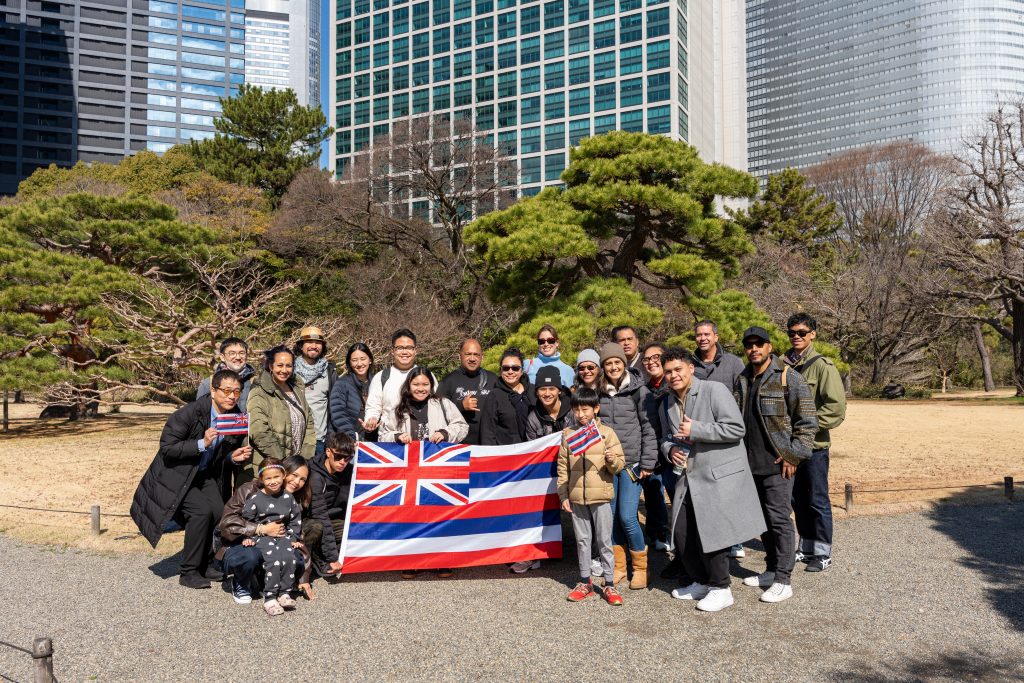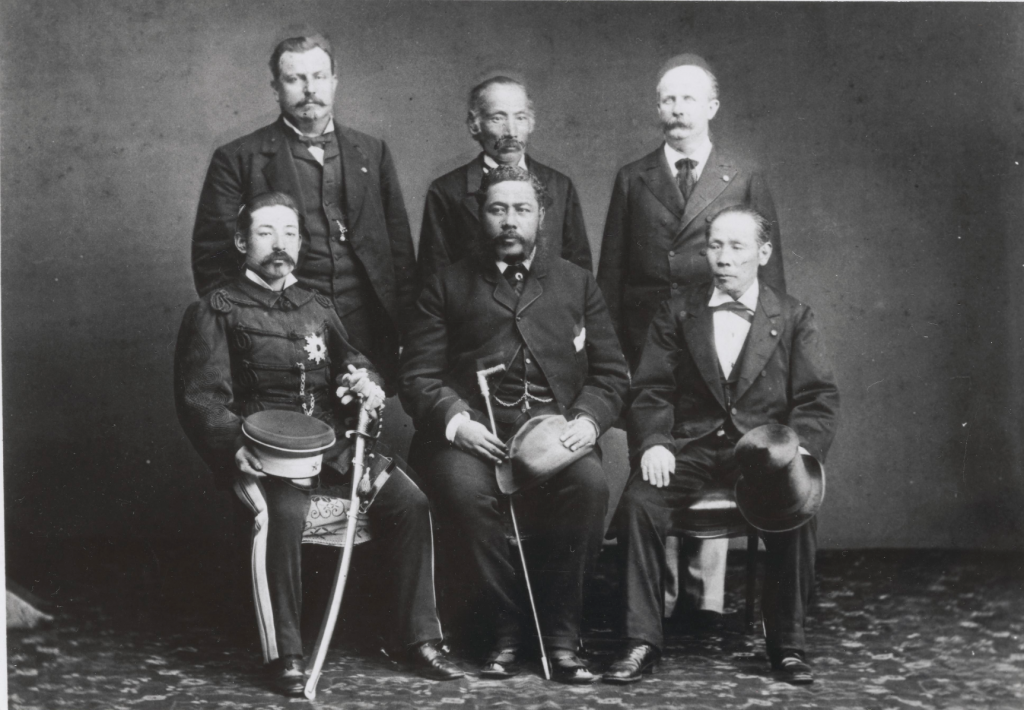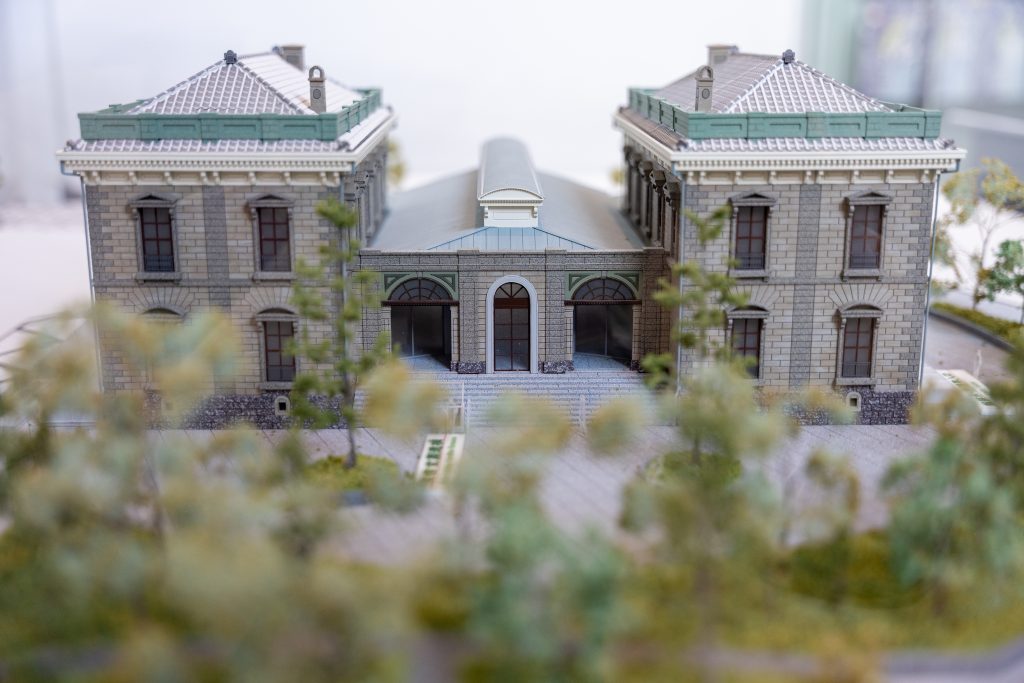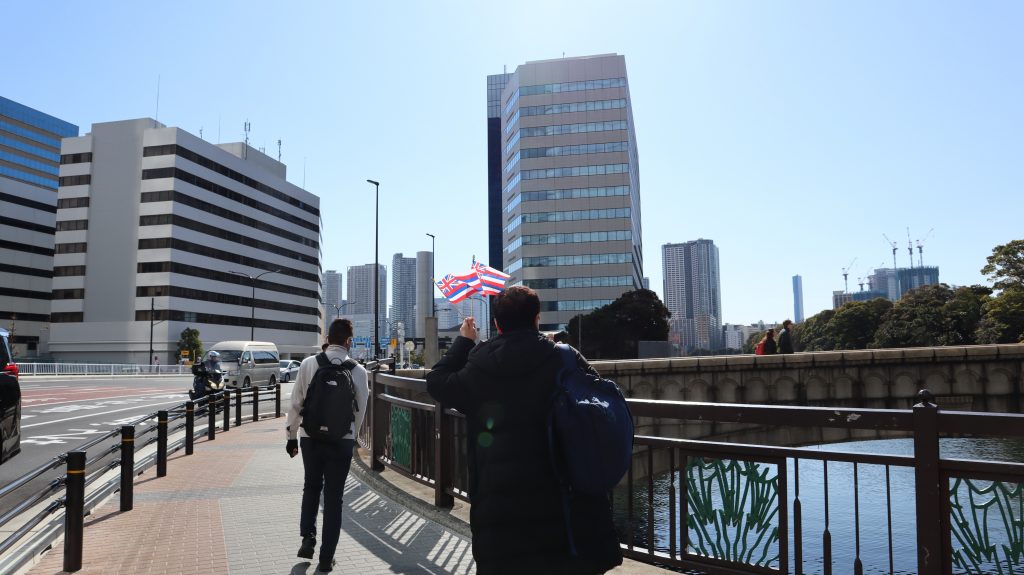John Makini Kapena & John Kaulukou
Na Maurice Kengo Crabbe
Hawaiʻi’s diplomatic ties with Japan in the late 19th century were pivotal in shaping the international standing of the Hawaiian Kingdom. One of the key moments in this relationship was the visit of Hawaiian diplomats John Mākini Kapena and John Lota Kaulukoʻu to Japan in 1882. These envoys represented the kingdom’s interests, engaging in high-level discussions with Japanese officials. Their visit included an audience with Emperor Meiji and a formal reception at the Enryokan Guest House, a historic site of international diplomacy in Japan. Their efforts, though facing challenges, underscored Hawaiʻi’s strategic engagement with the global community.
Today, on March 20, 2025, as we were leaving for Kyoto, we would stop at the Hamarikyu Gardens, formerly home to the Enryokan “Yenriyokan” Guest House. Kapena along with Kaulukoʻu were described as being entertained at this guest house on November 15, 1882; this was approximately a year after Kalākaua’s global tour that started in Japan.
John Mākini Kapena: The Seasoned Diplomat
John Mākini Kapena was a highly regarded Hawaiian statesman, holding multiple governmental roles, including Minister of Foreign Affairs, Finance, and Governor of Maui. In 1882, he was appointed Envoy Extraordinary and Minister Plenipotentiary to Japan, tasked with negotiating an immigration treaty. His mission was to establish formal agreements that would facilitate Japanese labor migration to Hawaiʻi, ensuring protections and fair treatment for workers. During his visit, Kapena met with high-ranking officials, including Foreign Minister Inoue Kaoru. However, Japan’s reluctance to finalize an agreement at the time resulted in an ultimately unsuccessful mission. Despite this, Kapena’s visit reinforced diplomatic goodwill and positioned Hawaiʻi as an active player in Pacific diplomacy.
John Lota Kaulukou: The Legal Mind
Accompanying Kapena was John Lota Kaulukou, who served as a legal advisor and secretary for the diplomatic mission. Kaulukou had an extensive career in Hawaiian governance, holding positions as a district judge, attorney general, and later a member of the Privy Council. His role in Japan was to assist in the legal and political aspects of the immigration negotiations. On November 15, 1882, both he and Kapena were honored guests at the Enryokan Guest House, where they were officially welcomed by Japanese dignitaries. Kaulukou’s involvement in this mission highlighted the legal and political expertise Hawaiians brought to international negotiations, ensuring that the kingdom was represented with strategic foresight.
The Enryokan Guest House: A Center of Diplomacy
The Enryokan Guest House in Tokyo served as a hub for foreign delegations visiting Japan. It was a symbol of Japan’s opening to the world during the Meiji era, hosting diplomats and dignitaries from various nations. For Kapena and Kaulukou, their reception at Enryokan signified Japan’s recognition of Hawaiʻi’s sovereignty and diplomatic standing. Their visit was not merely ceremonial; it was a step toward solidifying Hawaiʻi’s presence in international affairs, reinforcing the kingdom’s efforts to build partnerships in the Pacific.

The diplomatic engagement between Hawaiʻi and Japan in 1882, embodied by Kapena and Kaulukou’s visit, reflects the Hawaiian Kingdom’s proactive approach to global relations. Despite challenges in securing an immigration treaty, their mission strengthened diplomatic ties and reaffirmed Hawaiʻi’s sovereignty on the world stage. The reception at Enryokan showcased the respect Japan had for Hawaiʻi, acknowledging the kingdom as a legitimate and influential Pacific nation. Their journey serves as a reminder of Hawaiʻi’s historical agency in international diplomacy—a legacy that continues to inspire today.

References
Kalākaua’s World Tour Assistants: William Nevins Armstrong & Charles Hastings Judd
Na Keanu Suyat-Okamoto
ʻAuhea ʻoukou e nā hoa makamaka ʻimi naʻauao o ko Hawaiʻi pae ʻāina a me ko Iāpana pae ʻāina! He haliʻa aloha poina ʻole kēia pili i ko ka mōʻī Kalākaua huakaʻi ʻana i Iāpana i ka makahiki 1881. He huakaʻi ko mākou, nā haumāna o ka papa hana Hawaiian Youths Abroad, i Iāpana nei no ke aʻo ʻana i ka pilina o Hawaiʻi me Iāpana. No laila e ka mea heluhelu, e hoʻonanea ʻoe i kēia ʻike kupaianaha.
In January 1881, when Kalākaua decided to take a trip around the world, Willian Nevins Armstrong and Charles Hastings Judd, two missionary descendants, were selected to accompany His Majesty on this amazing journey around the world by supporting him as Minister of State and Chamberlain.
The King along with his two men arrived in Yokohama, Japan in the morning of March 4th in 1881. There was an extravagant welcoming ceremony done for the King of Hawaiʻi, which they were not expecting because the King first planned to visit Iāpana incognito with fear that he would humiliate himself if no notice was taken should he display the royal standard. But there was nothing to fear, as the welcoming ceremony indicated that the Japanese not only recognized Kalākaua, but went to incredible lengths to show the Hawaiian delegation honor and respect, so much show that Hawaiʻi Ponoʻī, Hawaiʻi’s national anthem, composed by Kalākaua himself, was played upon the King’s stepping foot on Japanese soil, a gesture that was appreciated and stirred up great emotion for the Hawaiian delegation.
The monarchʻs trip consisted of 19 days in Japan. His first in Yokohama, his continuous 12 in Tokyo, and for the remainder of 6 days Kobe, Osaka, and Kyoto. Throughout this whole journey William N. Armstrong as well as Charles H. Judd accompanied his majesty traveling through Iāpana. On his second day in Japan, Kalākaua writes in his diary that they were all escorted to Shimbashi station, which we were fortunate enough to see today.


Although the Shimbashi station is rebuilt today, there were still remains throughout the station that were displayed. There were steps in the front of the station that were displayed, that Kalākaua as well as Mr. Armstrong and Mr. Judd once stepped on in 1881. In the station, there was a small display in the glass case which showcased the original Shimbashi Station.
In the back of the station, we were able to see the original railway track that was established in 1870. The platform that was displayed at the railway track was the same place that the three men had got off the train. In Armstrongʻs book regarding the trip of the king, he writes that the station was decorated with Hawaiian and Japanese flags.
After they were received by His Highness Higashifushiminomiya, Prince Arisagawa, Prince Fushiminomiya, Prince Kitashirakawa, as well as many other important figures during the time, they were led to the Emperor’s Summer Palace which is at the Hama-rikyu Gardens. As they made their way down the route of travel, the path was also decorated with Hawaiian and Japanese flags which was noted by Armstrong to be four miles. Armstrong also notes that the Japanese people all bowed very low, some even on the ground as they were passing through the path. Although the palace no longer remains, we made our way to the land at which the palace once stood.

As we were standing there and taking in the cold air and warm rays of sun in the spring breeze, I couldnʻt help but think that the three men got to experience this kind of weather as well during their stay at this wonderful garden. When we went to the back of the property, we sang the Hawaiian National anthem Hawaiʻi Ponoʻī. The King writes in his diary that while there there was an emotion that came over him that he could not help to press a tear of Aloha. I think that is exactly what we were experiencing as well in the land at which the Emperors Palace once stood.
As we were exiting the garden we stumbled across a pine tree which is believed to be more than 300 years old. According to the sign right next to this magnificent tree, it was planted in 1709 and is one of the largest Japanese black pines in the Tokyo area. As I stood there marveling at this massive tree, I began to wonder if the King and the two men appreciated this pine tree just as I have.
References
Armstrong, William N. Around the World with a King. New York, F.A. Stokes Co, 1904.
Hawaiʻi State Archives, Foreign Office & Executive (FOEX) 38, King Kalakauaʻs Trip Around the World: Letter of Armstrong & Others. Jan – June.Humanities, National Endowment for the. “The Hawaiian Gazette. [Volume] (Honolulu [Oahu, Hawaii]) 1865-1918, October 17, 1905, Page 4, Image 4.” News about Chronicling America RSS, Published … by J.H. Black at the G.P.O., 17 Oct. 1905, chroniclingamerica.loc.gov/lccn/sn83025121/1905-10-17/ed-1/seq-4/.
